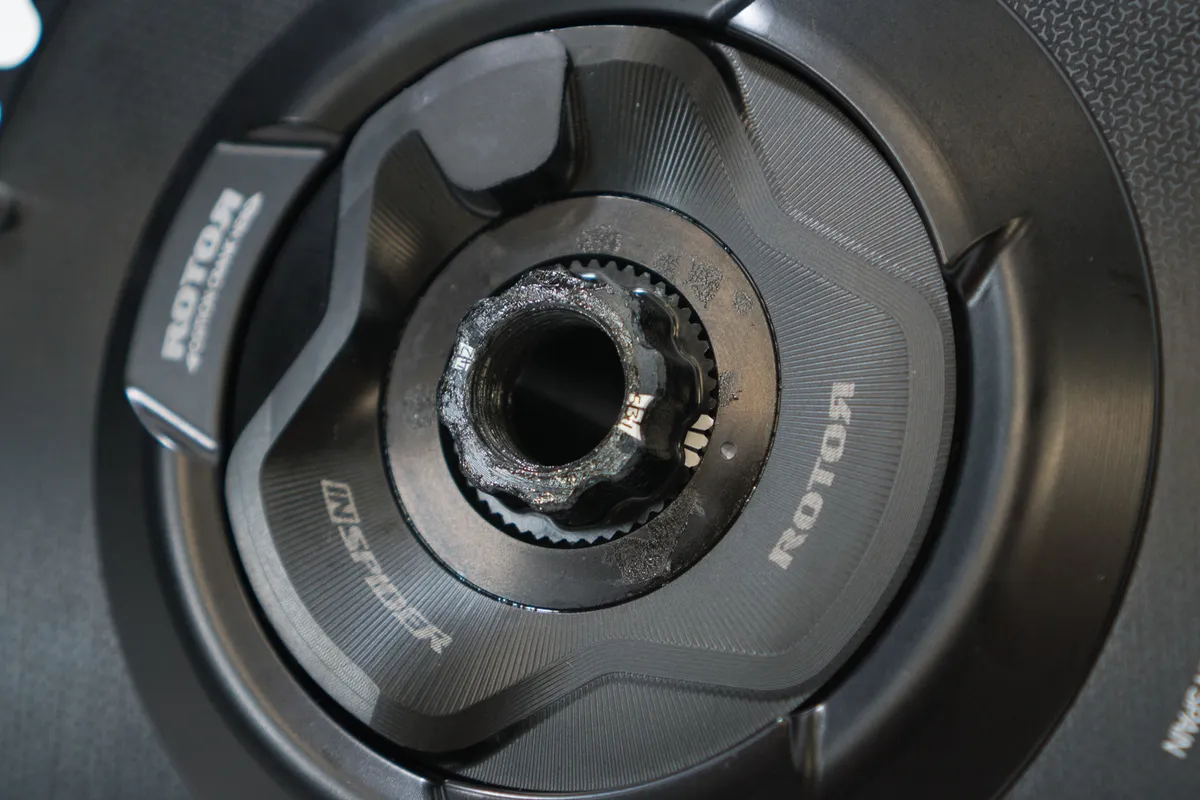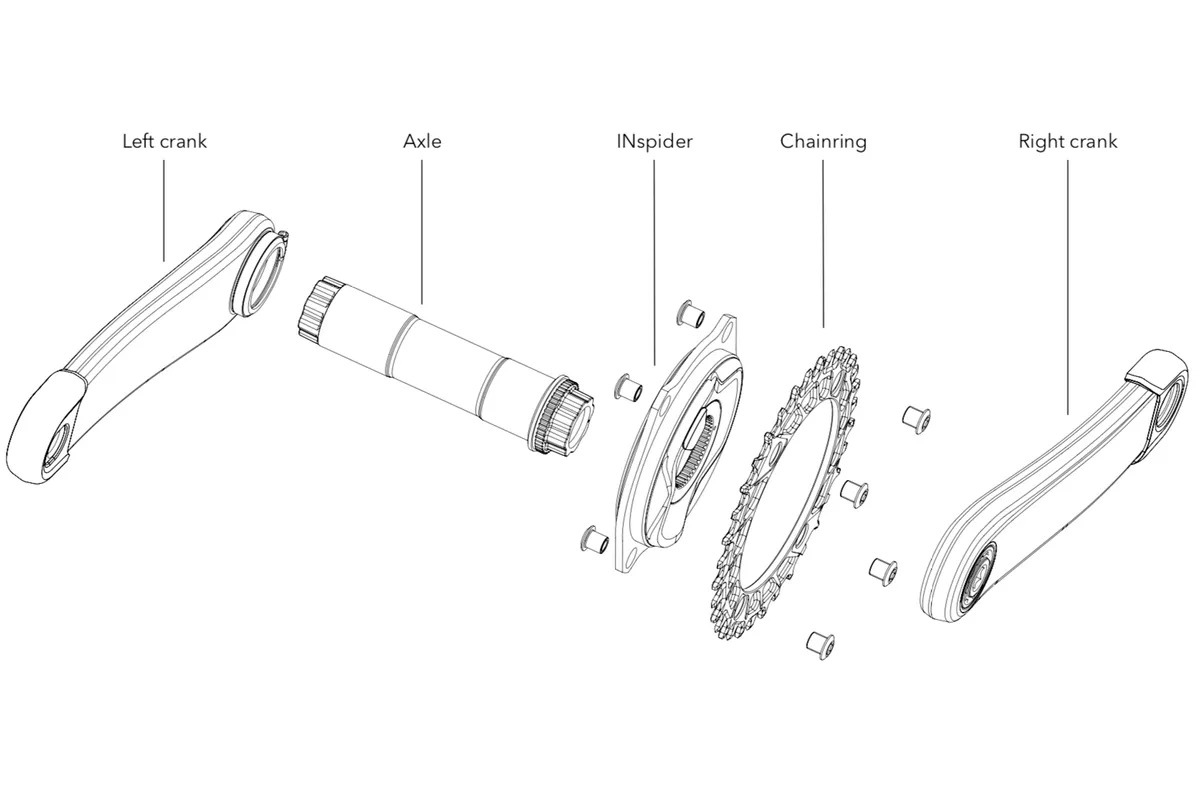The Rotor INspider is a new highly-modular spider-based power meter system that is compatible across all disciplines.
The power meter will work with any Rotor crankset that uses the brand’s OCP (Optimal Chainring Position) splined interface, including both mountain bike and road cranksets.
At £585 / $649 / €649, the Rotor INspider is an intriguing product that potentially offers increased accuracy compared to crank arm-based power meters, alongside long-term compatibility and adaptability.
If the impressive on-paper stats stand up in the real world, this could become a popular option for dedicated multi-discipline racers who don’t want to invest in multiple power meters for different bikes (and are happy to use Rotor cranks).
Rotor INspider power meter key specs

- Spider-mounted power meter for all modular OCP-equipped Rotor cranksets
- Compatible across all disciplines, including mountain biking, road cycling, gravel, cyclocross, etc
- 110mm BCD asymmetric 4-bolt chainring pattern
- 1× and 2× compatible
- 149g claimed weight
- ANT+ and Bluetooth connectivity
- Aero Crown shroud improves aero qualities
- USB-rechargeable battery with claimed 200-hour battery life
- £585 / $649 / €649 for INspider, cranks, chainrings, axle etc. all sold separately
What’s different about the Rotor INspider? What is it compatible with?
Rotor isn’t the first brand to produce a modular spider-based power meter but it is, to our knowledge, the first to be officially compatible across all disciplines. This cross-discipline compatibility and the modularity of Rotor’s crank system are the key features of the INspider.
Quarq and SRM also produce spider-based power meters, but these are discipline-specific. For example, an SRM power meter for SRAM mountain bike cranks cannot be used on its road crankset.
It is worth mentioning that Power2Max also produces a number of spider-based power meters, including the Ngeco for Rotor’s Aldhu cranks. This also mounts via the OCP system and is available with the same 110mm BCD 4-bolt pattern that the INspider uses. However, it is not clear whether this would be compatible with the brand’s mountain bike cranks.
The situation with the INspider is clear — it is compatible with any Rotor crankset equipped with the OCP splined fitting. This includes both mountain and road cranksets, so it will work across all disciplines.
Rotor’s OCP system was introduced in 2017. When used in conjunction with Rotor’s Power app, the system allows riders to orientate the brand’s oval Q-rings in one-degree increments into their optimum position.
Because the INspider mounts to a crankset using this same system, it can also be rotated to optimise the position of Q-rings.

More critically, the modular nature of Rotor’s cranks means the system can be adapted to work with pretty much any bike or bottom bracket standard — whether it's 30mm or 24mm axles, a 2× or 1× setup or something else altogether, it can be made to work.
To our minds, this is what makes the INspider truly interesting — you aren’t locked into a single discipline but, providing Rotor produces the necessary parts, the system could also be adapted to work with any future standards or framesets.
If you absolutely must have a power meter on every bike you ever plan on owning, investing in this could potentially mean less outlay in the long run.
Why not just buy two Stages power meters?
At £585 / $649 / €649, the INspider certainly isn’t cheap.
However, assuming you are buying the INspider to use across multiple bikes and that you take your power numbers seriously, it could be a more compelling option than buying multiple single-sided power meters from the likes of Stages or 4iiii.
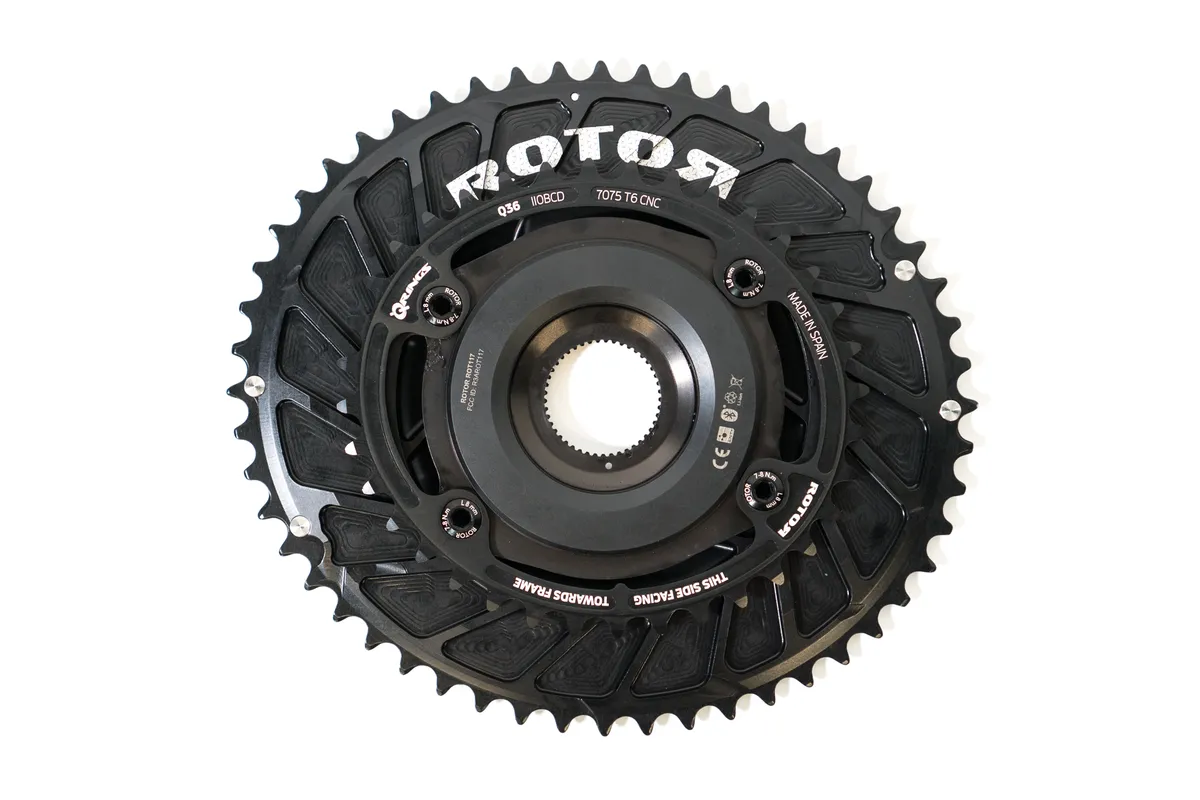
To start, as the meter itself — which comprises four strain gauges — reads power from the spider it should, in theory, give a true combined left-right power reading.
A Stages, 4iiii or similar single-sided power meter only gives a calculated total power figure, multiplying one side by two.
To be clear, the INspider does not give a left-right leg split, but because it measures from the spider it should be more accurate (unless you have a perfectly balanced left-right leg power, which is unlikely/impossible).
Whether or not this (potential) discrepancy in power matters to you depends on how much of a power nerd you are.
On that note, Rotor says it "stays away from claimed accuracy as there is no standard to compare to that is 100 percent accurate", but that it "always advises that the calibration system we use has less than +/- 1 percent error".
The long-term compatibility and modularity of a spider-based power meter also (potentially) means less investment in the long run than buying individual system-specific single-sided power meters — what's to say the Dura-Ace R9100 Stages power meter you buy today will be compatible with Dura-Ace R9200 (whenever that is inevitably released)?
What chainrings can be used with the Rotor INspider?
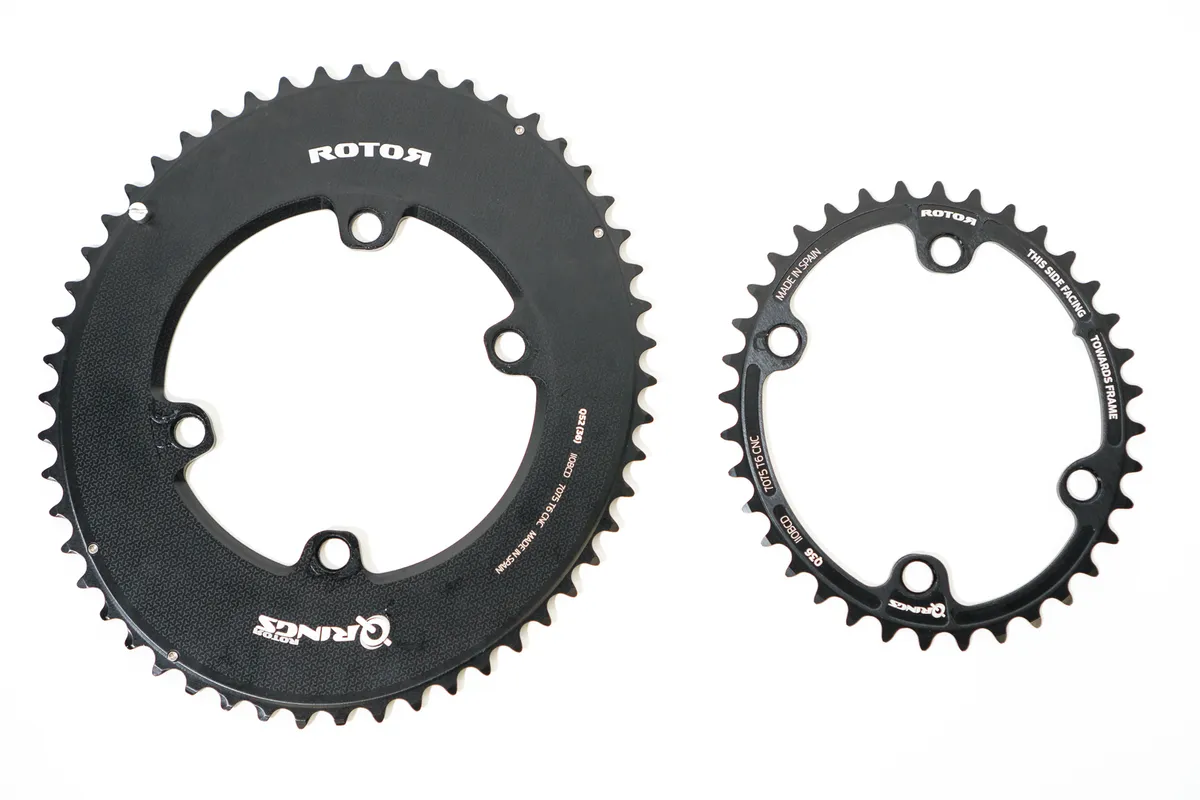
- Road 1× (round or Q-ring): 40, 42, 44, 46, 48, 50
- Road 2× (round or Q-ring): 50/34, 52/36, 53/39, 54/42
- MTB (round or Q-ring): 34, 36, 38
A wide range of chainrings in both round and Q-ring options are available for the INspider.
Chainrings mount to the INspider using the same 110mm-BCD asymmetric 4-bolt pattern as Shimano uses on its road cranksets.
Chainrings suitable for use with SRAM’s 12-speed road and mountain bike groupsets in either 1× or 2× guises are also available.
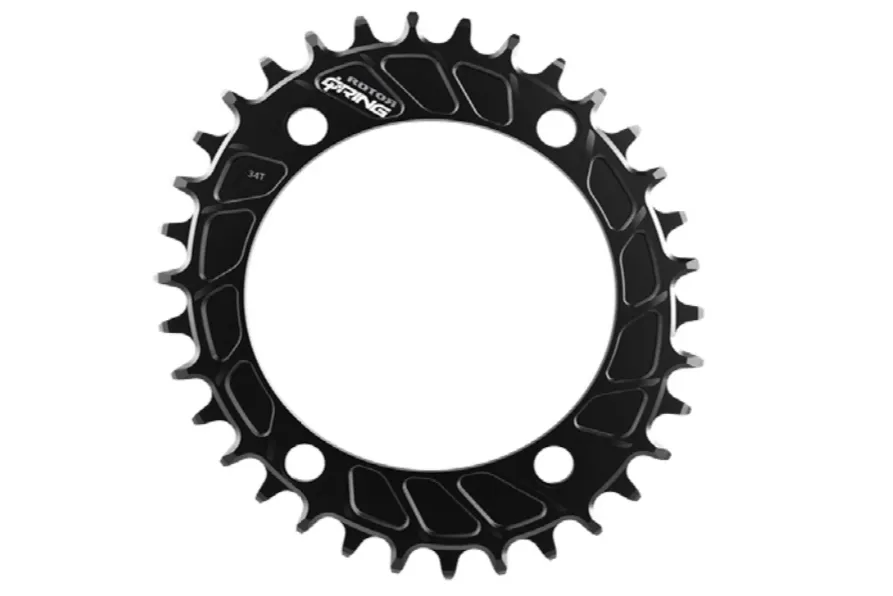
The 110mm BCD does mean that you are limited to a minimum chainring size of 34t. This may be an issue for some mountain bikers, where 30t or even 28t chainrings are often used in particularly hilly areas.
What is the Rotor Aero Crown?
Rotor has also developed a machined alloy shroud for its chainrings called the Aero Crown.
Rotor claims “the initial idea was to equip the INspider with a hollowed-out chainring… to reduce weight”. However, it was decided that the improvements to chainring stiffness and the aero qualities offered by a ‘solid’ chainring outweighed any small reduction in weight.
The Aero Crown shroud helps smooths the transition from the chainrings to the INspider, which is said to improve aero performance (though Rotor makes no specific quantified claims about this).
The Aero Crown is also claimed to have the additional benefit of reducing the possibility of the ingress of dirt towards the bottom bracket. It will work with either 1× or 2× setups.
Most importantly, it looks really cool, giving the whole setup a very unified ‘system’ look.
A non-power meter-equipped aero spider and matching ‘solid’ chainrings will also be available later this year.
Who is the Rotor INspider for?
It may be simple to swap, but we can’t foresee many riders switching the INspider between different bikes on the night before a big race.
Instead, we do imagine it finding favour with serious racers who, perhaps, want a power meter for their summer race bike that can also be fitted to a cyclocross bike in the winter.
Likewise, the idea that you’re investing in a system that can be adapted to fit future bikes, regardless of the discipline, is appealing — you’re very unlikely to be stuck with an incompatible/defunct power meter with this system.
This is all, of course, dependent on using Rotor’s cranksets, but we’ve had good experience with the Spanish brand’s products in the past, so it’s unlikely to present a huge compromise for most riders.
You’ll note that the rationale for buying the INspider is buried beneath caveats and what-ifs. However, the concept of a truly modular power meter family that can be used across multiple disciplines will undoubtedly be intriguing to the right rider.
Whether or not a member of the BikeRadar test team is that person remains to be seen, but we’re looking forward to finding out when we test the INspider over the coming months.
